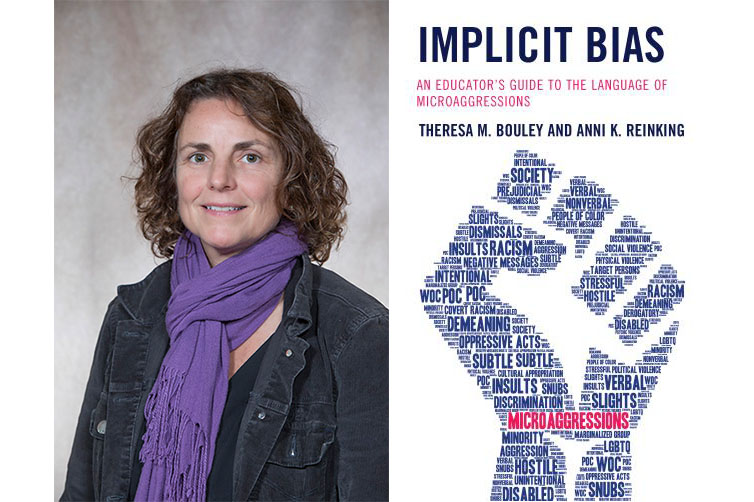- Apply
- Visit
- Request Info
- Give
Bouley’s book on implicit bias makes best-seller list
Written by Molly Boucher
Published on October 04, 2022

Eastern Connecticut State University Professor of Education Theresa Bouley recently hit Library Journal’s best-seller list for academic/education-centric books with her latest release, “Implicit Bias: An Educator's Guide to the Language of Microaggressions.” Published by Rowman & Littlefield in 2021 and co-authored by Anni K. Reinking, the book brings attention to racial biases and microaggressions that students of diverse backgrounds face.
The book highlights race, gender, LGBTQ+ involvement, religion, socioeconomic status and other various identities among students so that educators can effectively respond and eliminate biases and microaggression within their classroom.
“We are both educators and know that educators impact the future of our country,” said Bouley of her and Reinking’s motivation to write the book. “This book provides digestible information for people at all parts of their journey regardless of their identity. It aims to provide a guide and reference point for reflection. Everyone is at a different place in their own growth journey, and this is just one more resource along that path.”
Bouley is the president of the Connecticut chapter of the National Association for Multicultural Education (NAME), a non-profit organization that advocates for equity and social justice through education. As a teacher, her focus is to bring attention to topics such as gender, sexuality, environmental education and the inclusion of LGBTQ+ students and families.
In “Implicit Bias,” the authors explain the impact of implicit biases and their effects on children in the classroom setting. “The terms implicit bias and microaggression have been buzzwords within the last few years, however many people may not know what the terms actually mean or how their own implicit bias may be experienced as a microaggression by others — the very nature of implicit bias is that it is unconscious and insidious.”
Addressing microaggressions, Bouley explains that they are anything but small. “Microaggressions are not micro; they are abuse and result in emotional and physical harm and can be traumatic. Some students — those of marginalized groups — experience microaggressions in schools more than others. It is imperative for educators and others working with students and families to understand that actions, words and even thoughts can have dire consequences in the life of someone else.”
She specifically urges teachers to pay attention to their own assumptions and know the signs that are biased and micro-aggressive. “While all students and families experience microaggressions at some time or other, students who live in poverty and students of color or students with varying abilities or on the LGBTQ+ spectrum all experience microaggressions more commonly than their peers.”
The book also highlights minority groups that are often overlooked, even when discussing diversity. “We feel that people who are and have been historically excluded from society feel ‘seen’ in this book and have a basis to provide people with a resource for learning,” said Bouley.


